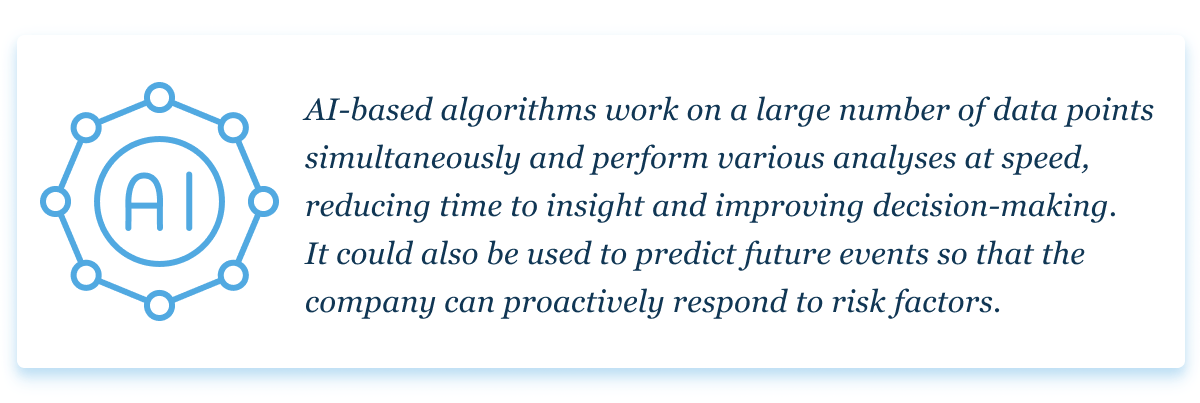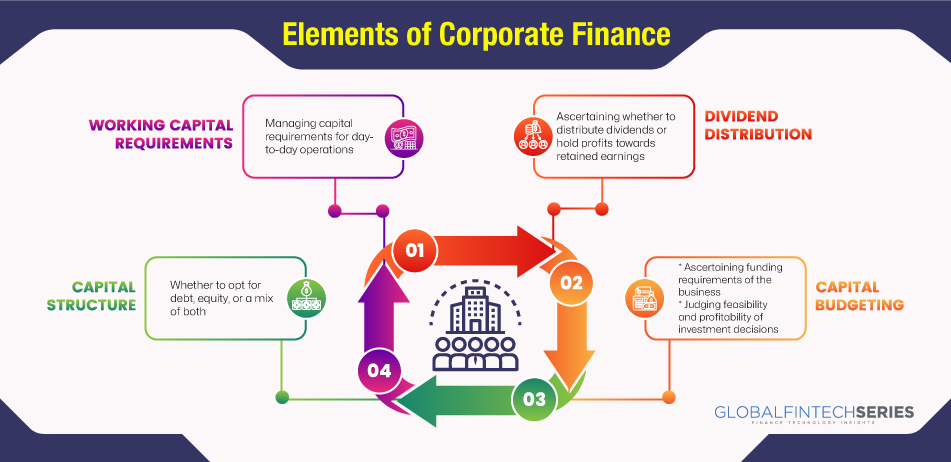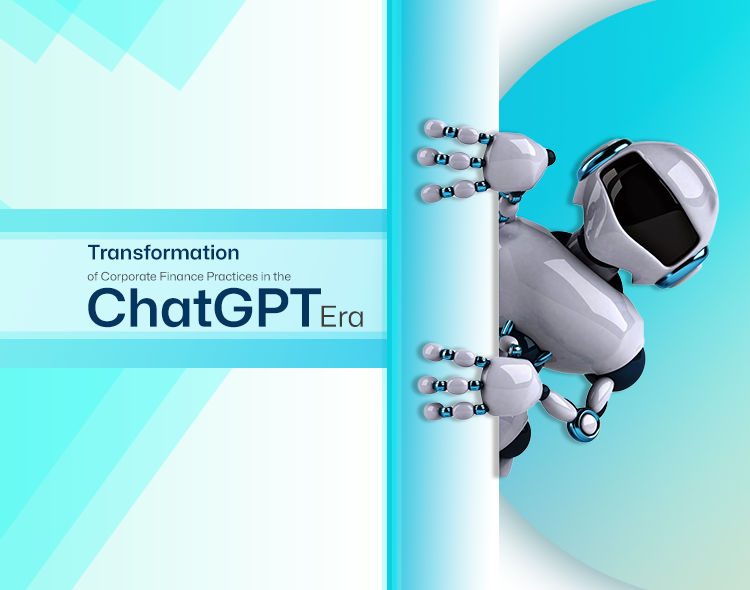86% of C-executives want to make machine intelligence their go-to technology for decision-making and process automation. Although the application matrix may vary, corporate finance is well covered by the possibilities of smart systems. Almost every few decades, a new invention drastically alters the course of human history. By innovations, we mean those that significantly improve the quality of life, like the internet or airplanes.
What upcoming historical event do you think will be the most momentous one?
Well, it is here and is known as Chat GPT.
Summary
- Introduction
- What is Corporate Finance
- An Overview of ChatGPT era
- Exclusive Industry Insights
- Connecting the dots- Corporate Finance and Chat GPT
- How applications like ChatGPT have the potential to transform your company?
- Challenges in ChatGPT
- Future Scope
- Conclusion
Introduction
The artificial intelligence research company Open AI developed it. A natural language processing (NLP) model called ChatGPT combines OpenAI’s GPT-2 transformer-based language model with supervised and reinforcement learning methods to improve it using the GPT-3 group of large language patterns. The approach allows users to have casual text-based interactions with an AI system.
Read: Trust in Banking Explained With 10 Live Examples
Customer service applications and the creation of virtual assistants for voice and text discussions might both make use of it. Additionally, ChatGPT offers features like topic, mood, and sentiment analysis capabilities to assist users in better understanding their discussion partners. Additionally, in order to produce more natural interactions between users and bots, it has the capacity to build several discussion threads. We’ll also look at some of the obstacles to AI development and discuss solutions. The most current advancements in artificial intelligence (AI) are discussed in this article. Recent years have seen a major advancement in AI, with several new technology and applications being created. And talk about how some of these developments have improved human life.

What is Corporate Finance?
Corporate finance is concerned with a corporation’s capital structure, including how it is financed and the steps management takes to raise the company’s worth. Allocation and prioritization of financial resources are also considered part of corporate finance.
Corporate finance’s overarching goal is to maximize a company’s value via resource planning and execution that strikes a balance between risk and profitability.
Read the latest article: 10 Best Applications Of AI In Banking
Corporate finance places a strong emphasis on the need to maximize a company’s and its shareholders’ financial stability. A company’s financial operations fall primarily within the purview of this subset of the finance department. Important decisions about allocating funds, investing, and organizational budgeting.
For instance, a real estate investment company’s department determines the amount of money needed to purchase assets. They will also focus on finding efficient sources of financing for asset purchases and employing the appropriate calculations. Such choices whether to fund via debt, equity, or a mix of the two—determine an organization’s capital structure. Making sure that working capital management is done optimally is another part of this area.
Below is a graphical representation of the elements of corporate finance.

To handle short- and long-term financial operations, corporate finance seeks to secure funds from the appropriate sources. It maps out the ways in which a company intends to invest and allocate its resources to achieve maximum profit. Having a well-thought-out capital budget and organizational structure in place is crucial for risk and profit management.
Read: Unleashing The Power: How Tech Giants Harness Generative AI Chatbots
Using capital budgeting methods, a business can estimate how much money will come in as a result of its investments. They determine the most affordable funding options or the ideal ratio of debt to equity in the capital structure. Working capital requirements are taken into consideration for immediate demands.
Therefore, we might argue that these procedures validate the company’s status as a going concern. It also improves numbers in financial statements. As a result, it will maximize value or, to be more precise, the maximization of stock price.
Exclusive Industry Insights
Lorien Gamaroff, CEO and Co-founder at Centbee donated his wisdom to the Global Fintech Series, which serves as the website’s unique material. His opinions were fascinating.
How applications like ChatGPT have the potential to transform your company
Despite the fact that we are all familiar with the word ChatGPT, we are not really sure what it means or how it works. You may ask the bot any question or instruct it to give you a tale, and it will react with subjects and answers that seem genuine. The user and the bot will communicate naturally as a consequence of the interface’s design to mimic human communication.
ChatGPT’s Reinforcement Learning with Human Feedback (RLHF) technology is based on GPT-3.5, a language model taught to produce text, and is tailored for conversational discourse. The conversion rates for chatbots are shown in the graphs below, some of which may surprise you. What should you understand about this well-known AI chatbot system, then? Here is a primer that will give you all the details you need to begin going.
Read: A Global Map Of Cryptocurrency Regulations
Technology is advancing into previously considered to be human-only domains thanks to products like ChatGPT and GitHub Copilot as well as the underlying AI models that drive such systems (Stable Diffusion, DALLE 2, GPT-3, to name a few). Computers may now plausibly display creativity thanks to generative AI. Using the information they have digested and the interactions they have had with users, they may respond to searches with unique material. They may write computer code, create blogs, create rough sketches of packaging designs, or even theorize about the cause of a manufacturing problem. Below is a graphical representation of the Chatbot statistical figures.

This most recent generation of generative AI systems has been developed using foundation models, which are gigantic, deep learning models that have been trained on very big, diverse, unstructured data sets (such as text and pictures) that span a wide range of themes.
With minimal fine-tuning needed for each activity, developers may adjust the models for a broad variety of application scenarios. For instance, scientists utilized a previous version of GPT to develop new protein sequences, and GPT-3.5, the model that forms the basis of ChatGPT, has also been used to translate text. In this approach, everyone may benefit from the strength of these capabilities, even developers without specialized machine learning skills and, in certain situations, non-technical individuals.
Additionally, using foundation models may drastically cut down the time needed to create new AI applications.
2023 is expected to be one of the most interesting years for AI yet because to generative AI. But as with any new technology, corporate leaders must move cautiously since current technology poses several moral and practical difficulties.
Challenges in ChatGPT
According to OpenAI, ChatGPT may sometimes respond to negative commands, exhibit discriminating behavior, and occasionally construct solutions that seem convincing but are really inaccurate or illogical. Another problem cited by its designers is that it might reply slowly. Such technologies are exciting, especially if they help eliminate barriers to a higher quality of life, such the racial differences in reading proficiency. In contrast, there are a few methods to lessen these risks.
To avoid introducing hazardous material, it is crucial to choose the original data used to train these algorithms. Next, businesses might think about using more specific, specialized models as opposed to a general generative AI model.
A generic model may be modified by organizations with more substantial resources based on their own data to meet their objectives and lessen bias. The output of a generative AI model should be reviewed by a real person before it is published or used, and organizations should avoid using them for critical decisions that need major resources or human well-being.
Some of humanity’s challenges, where sustainability is crucial, can only be partly solved by AI. One of the major AI restrictions is how effectively the data and methods it is trained on. As a consequence, AI systems can only make predictions using the data that has been given to them.
The fact that AI requires human-specific skills like empathy and creativity is another disadvantage. AI systems are primarily designed to do certain tasks, therefore they are unable to think creatively or understand complex human emotions. Before relying on the replies from ChatGPT, users should confirm the information from trustworthy sources. ChatGPT uses just plain text; there are no links or citations.
It is challenging to verify the accuracy of its replies, unlike Google. As ChatGPT develops, Google is also creating substantial language models of its own and significantly using AI in its search engines. A huge language model called ChatGPT is being continuously trained to provide more accurate responses. However, since it’s a new technology, the model still requires further training. Consequently, the AI chatbot could provide false information. Like many AI models, ChatGPT’s training data has certain restrictions. The output of the model might be negatively impacted by the bias in the data and the constraints in the training data.
Naturally, these latest AI advancements are unable to read minds. Text prompts are a fresh but less sophisticated kind of human ingenuity that is necessary to create the results the human user is seeking for. Iterative prompting is a technique used by the AI system to generate rounds of outputs in succession until the person who wrote the prompts is satisfied with the results. The precise dangers and potential repercussions associated with ChatGPT will ultimately decide how much regulation is required. In order to guarantee that powerful new technology is used ethically and responsibly, it is essential to thoroughly consider any potential implications it may have.
Read: Most Trending Crypto Wallet Of 2023 – Phantom
Although ChatGPT has received a lot of acclaim for boosting productivity, some individuals have voiced concern about it for legitimate reasons. Concerns have been raised concerning using this technology for submissions and exams by schools, colleges, and education bodies. Not to mention that Stack Overflow, a developer-focused site, banned the use of chatbots shortly after ChatGPT launched because of increasing results inaccuracy.
Future of Corporate Finance in the ChatGPT Era
As more users submit additional prompts into ChatGPT, it continues to grow. Students advance AI by forgoing traditional schooling in favor of ChatGPT’s shortcuts, making it more beneficial for users in the future. The field of educational technology will be significantly impacted by ChatGPT as well. Many edtech companies now provide the fundamentals of a topic while using ChatGPT to give students a chance to ask questions and have their concerns allayed.
Despite its flaws, ChatGPT will be useful in practical applications.
As a result, businesses are keen to use technology for profit-making goals. In the future, AI can assist in determining which students would benefit from which tutors the most, those who can not only close learning gaps but also provide valuable mentoring, direction, and inspiration. Designing new AI applications requires considerable thought, especially in light of the broad range of emotions that our society is experiencing in response to the quickly changing AI environment, including fear, optimism, worry, amazement, and awe.
Conclusion
Since its launch in November 2022, ChatGPT has achieved extraordinary success. Essays, fictional stories, haikus, and even cover letters for job applications may all be produced using it. To the biggest and smallest issues in life, ChatGPT has answers. It does this with the aid of painstaking oversight from human experts and data acquired from a staggering amount of online content. ChatGPT can have human-like conversations using natural language on a range of topics. ChatGPT users use the platform to assist with writing emails, writing code, and responding to questions on a range of topics, including investment. Until now, ChatGPT has gotten a very positive response, with many users praising its advanced features and ease of use.
The potential for ChatGPT to be a major force in natural language processing is great. Using the OpenAI platform, the chatbot replies to our questions in a natural, albeit somewhat formal, way. The ability of ChatGPT to perceive and respond to a broad range of concerns has been particularly impressive; some have even stated that it may entirely change how people interact with technology. Future enterprises in sectors like customer service, online learning, and market research would benefit greatly from ChatGPT’s characteristics. Billion dollars have been spent on the creation, training, and use of these models by OpenAI and its largest investors. Long term, it could prove to be a smart investment, elevating OpenAI to the forefront of AI creative tools.
Read: What Is Data Science?
[To share your insights with us, please write to sghosh@martechseries.com]

